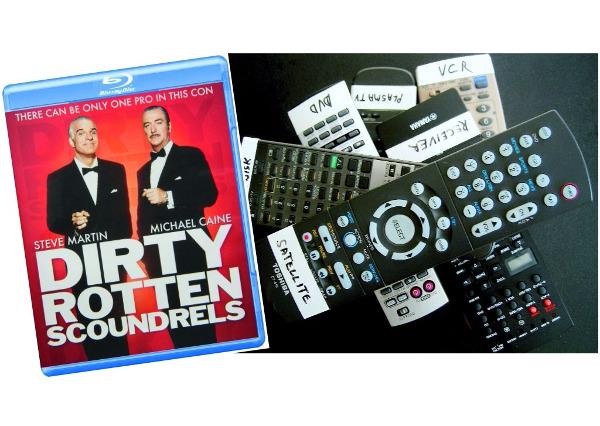Tech Hoarding: It’s Time to Get Rid that Old Gear

Near the middle of the movie is a scene where the duo has just finished a scam, and as they are divvying up the money amongst the crew, Jamieson (Caine) tells Freddy (Martin) that he won’t be getting any of the spoils.
“I wouldn’t dream of giving you your share without being certain that you would spend it wisely on beauty and culture,” Jamieson says. “Spending money is a responsibility, Freddy.”
In the next scene, the two are in a lavish wine cellar surrounded by thousands of dusty bottles carefully stored in racks. “Now, all these wines are very old,” Jamieson remarks as they are walking amongst the wine. “I purchased them to make certain they were cared for properly.”
“So you got a lot of wine to drink,” Freddy responds.
“You can’t drink them, Freddy. They’re far too valuable.”
“So you sell them.”
“Oh, I’d never sell them,” Jamieson chuckles, “they mean too much to me.”
This encapsulates the mentality of many people when it comes to their old electronic gear: It has no value to use but has too much value to part with. I can’t tell you how many installations I go to where the homeowner presents stacks of old gear, not so much insisting we incorporate it, but certainly urging us to use as much as possible. Tape decks, VCRs, CD players, receivers, record players, and more, items accumulated over the years and frequently with a back story that involves the phrase, “I purchased the top-of-the-line model at the Army PX when I was stationed overseas.”
Now, there’s nothing wrong with using “vintage” gear, and it certainly has its place. Speakers, for example, can provide years of enjoyment provided they haven’t been physically damaged by foam rot and aren’t blown—and if their cosmetic style still fits in with your current décor.
But much of this older gear people want to cling to is usually for that “just in case,” off chance situation that might come up. Say, the grandkids coming over and bringing an old VHS tape. Newsflash: It’s the 21st century; if the grandkids still have VHS tapes of anything, be a good grandparent and buy them the Blu-ray. Or it’s just covered under that old standard, “As long as we’ve got it, we might as well use it.”
The problem with shoehorning this old gear into modern systems is that it clutters the install and complicates operation. These older components don’t support modern (i.e., HDMI) connections and often require numerous additional cable runs to integrate properly. Sometimes they aren’t remote controllable or don’t have discreet control codes, and operating them is often clunky and leads to future service calls.
Even something “practical” like using old amplifiers or receivers to power new audio zones in the home could often be better streamlined by using a single multichannel amplifier. And, sure, your CD mega-changer likely still works, but you’ll get so much more from your music collection by digitizing it and using one of many available services to browse and enjoy your collection.
Also, while I’m sure you have a motley collection of old cables and wires that you’ve accumulated over the years—somehow nearly always coated in a bizarrely sticky residue that has the texture of Ghostbusters ectoplasm—let’s rewire your system with new cables. We’ll use clean, new ones that are the correct lengths and finished with nice labels.
I admit that I’m guilty of this techno-hoarding as well; I have a closet full of old amps, receivers, and DVD and LaserDisc players that don’t have any appreciable monetary value but which I just don’t have the heart to part with. Several years ago, I actually broke out an old LaserDisc of Speed—the film that literally got me into home theater and started my career as a custom installer—and watched it on my modern system. And while it was state-of-the-art 20 years ago, time has passed you by, old buddy, and the experience left me shocked and a bit heart sore at how bad it looked. Taking the LD player and accompanying Dolby Digital RF demodulator out of my system reduced a ton of wire clutter.
So, hang on to that old gear if you must, but just retire it from active service. Or, better yet, find someone who can give it a new home.






























































